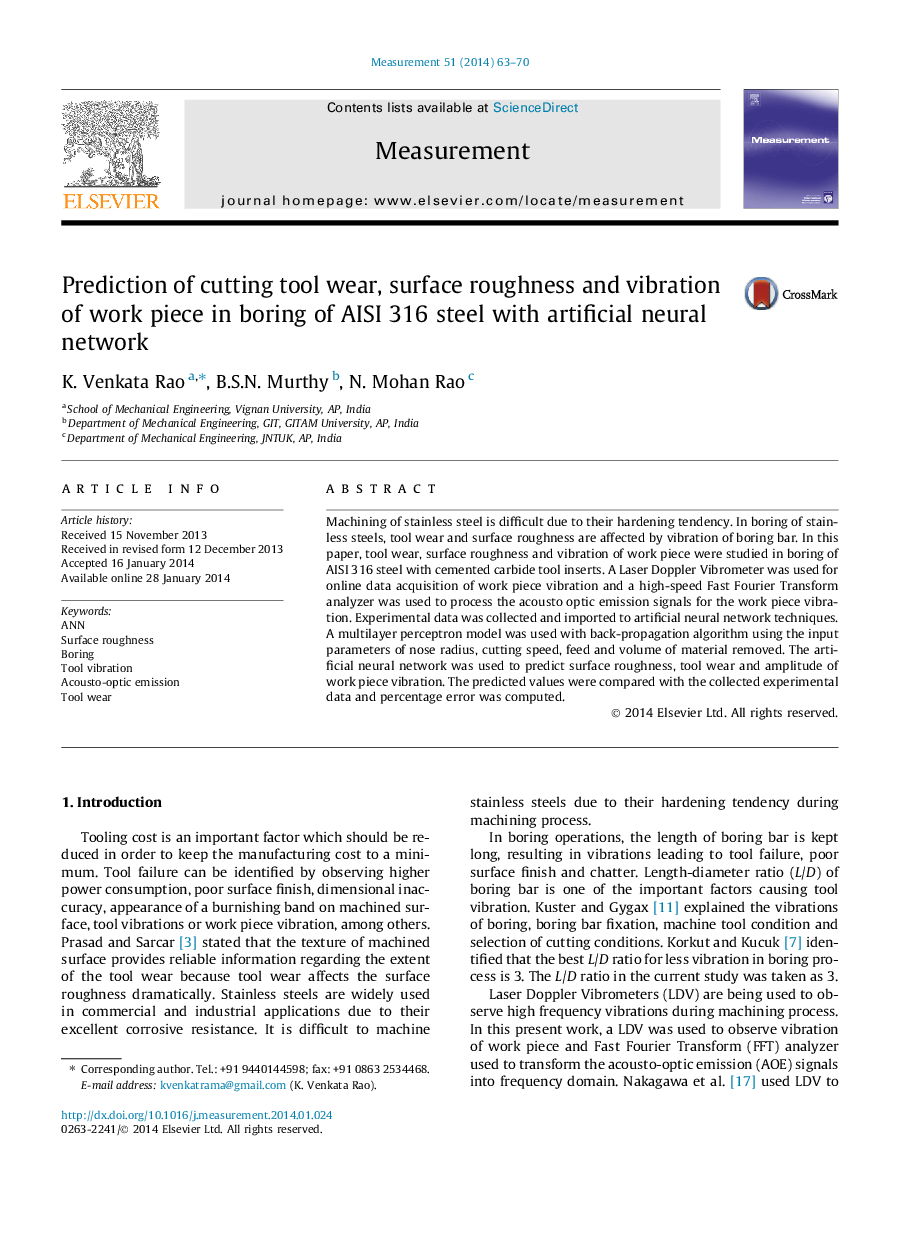| Article ID | Journal | Published Year | Pages | File Type |
|---|---|---|---|---|
| 7125368 | Measurement | 2014 | 8 Pages |
Abstract
Machining of stainless steel is difficult due to their hardening tendency. In boring of stainless steels, tool wear and surface roughness are affected by vibration of boring bar. In this paper, tool wear, surface roughness and vibration of work piece were studied in boring of AISI 316 steel with cemented carbide tool inserts. A Laser Doppler Vibrometer was used for online data acquisition of work piece vibration and a high-speed Fast Fourier Transform analyzer was used to process the acousto optic emission signals for the work piece vibration. Experimental data was collected and imported to artificial neural network techniques. A multilayer perceptron model was used with back-propagation algorithm using the input parameters of nose radius, cutting speed, feed and volume of material removed. The artificial neural network was used to predict surface roughness, tool wear and amplitude of work piece vibration. The predicted values were compared with the collected experimental data and percentage error was computed.
Related Topics
Physical Sciences and Engineering
Engineering
Control and Systems Engineering
Authors
K. Venkata Rao, B.S.N. Murthy, N. Mohan Rao,
